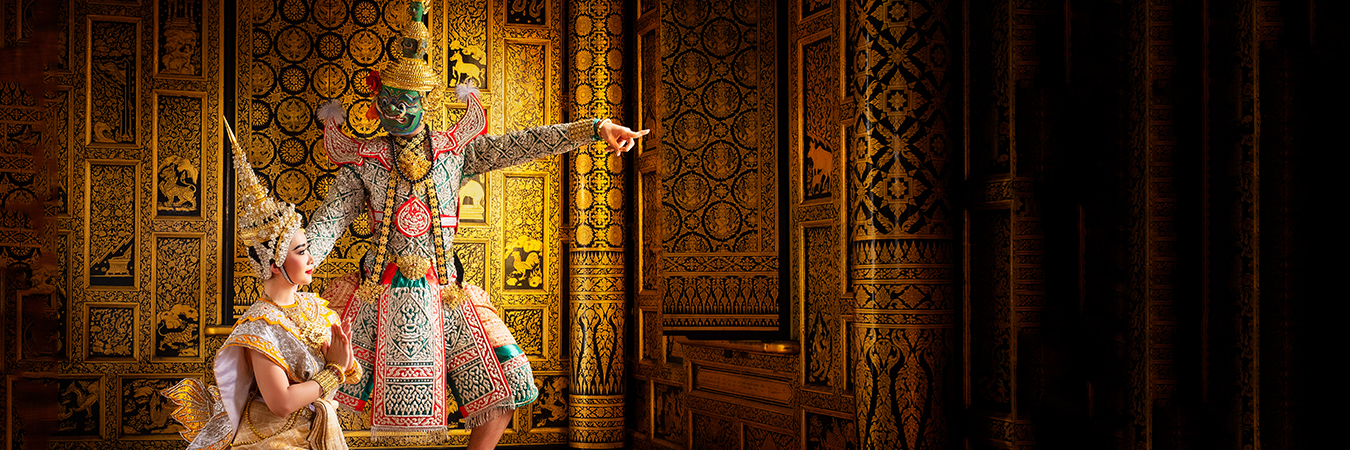“Dance is your pulse, your heartbeat, your breathing. It’s the rhythm of your life. It’s the expression in time and movement, in happiness, joy, sadness and envy.”
— Jacques d’Amboise
The classical dance forms of Thailand are an amalgamation of the nation’s cultural integration and have evolved as an independent and immaculate dance form in all its glory. They epitomise the nation’s renowned elegance, grace, and beauty.
The Thai classical dance, aka natasin, is said to have evolved during the Ayutthaya period (1351-1767). However, the definite classical roots of Thai dance still need to be objectively deciphered.
Discover the beauty of Thailand with Indo Thai News–your one-stop shop for the latest Thailand culture news.
Let’s take a look at some of the classical dance forms of Thailand.
Khon Dance
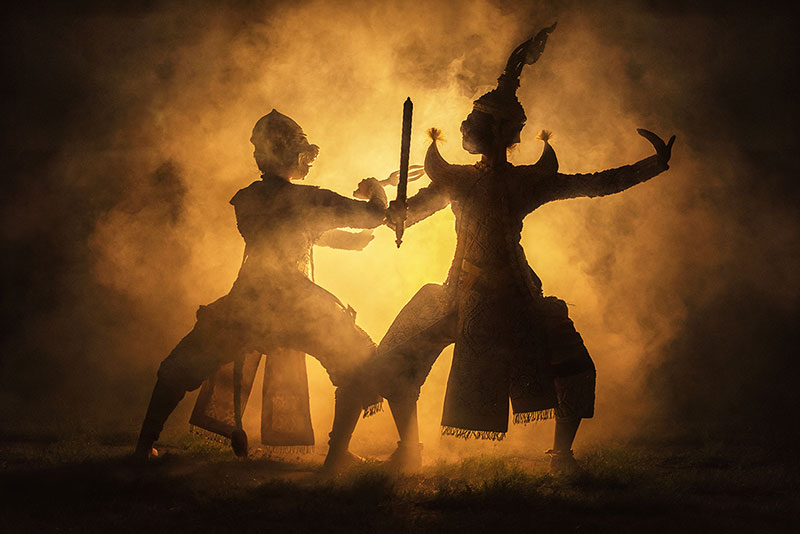
As one of the most exquisite and extensive classical dances, Khon originated in the 15th century. Its aesthetic dance performance features male artists masquerading as monkeys, demons, warriors, saviours, and destroyers.
The use of masks, colourful costumes, and a piphat orchestra (featuring wind and percussion instruments) are some essential attributes of the Khon Dance.
Due to its widespread popularity and cultural importance, UNESCO recognised Khon dance as an Intangible Cultural Heritage of Thailand.
Lakhon Dance
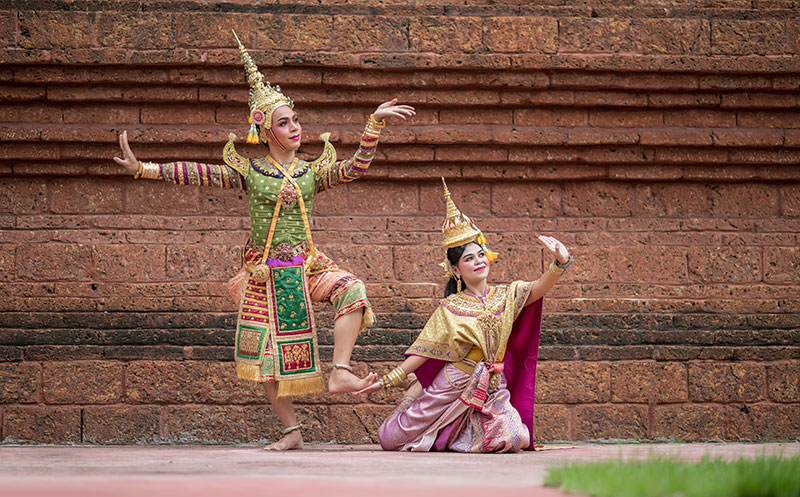
Originating in the royal courts of Thailand, this classical dance form traditionally included only women performers.
However, Lakhon Nai Phu Chai, one of its modern versions, has the presence of male dancers. The other versions of Lakhon include Lakhon Lok and Lakhon Phatag.
The primary storyline of this art form centres upon three mythological epics, namely:
The Ramakien (Thai version of Ramayana).
Unarut, aka the legend of Aniruddha, “the unconquerable.”
Inoa, aka the Panji tales (cycle of Javanese stories centred around the legendary prince of the same name from East Java, Indonesia).
Embellished with powerful performances, Lakhon Dance includes acting, singing, and dancing. Lavish costumes, lively gestures, and elegant upper body movements dominate its graceful and elaborate performances.
Fawn Dance
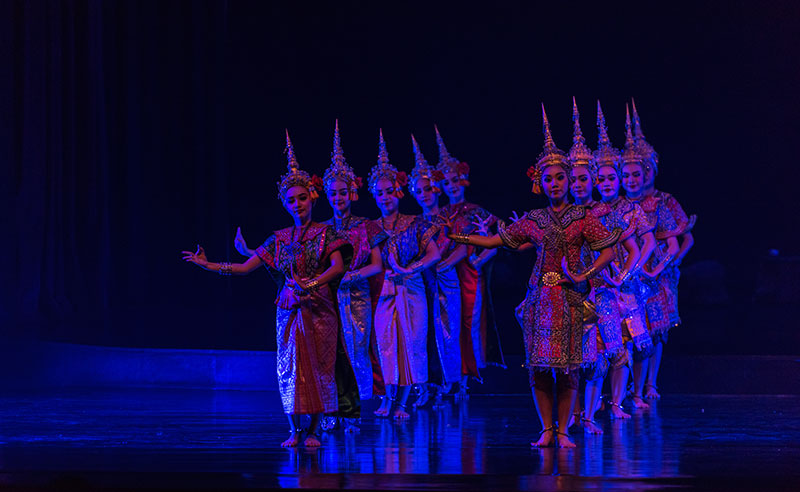
It is a traditional Thai folk dance that originated in the royal courts of Siam. This classical dance has become an intricate part of Thai culture, including a simple yet precise choreography.
The diverse ensemble of performers traditionally includes five to six dancers. Though, with the infusion of modernity, the number of performers has recently increased.
The five mesmerising variants of the Fawn Dance are:
- Fawn Tian, aka the Candle Dance.
- Fawn Leb, aka the Fingernail Dance.
- Fawn Ngiew, aka the Scarf Dance.
- Fawn Marn Gumm Ber, aka the Butterfly Dance.
- Fawn Marn Mong Kol, aka Happy Dance.
Captivating accessories, elegant uniformity and coordination, soft and graceful rhythm, brilliant colours and admirable use of props exemplify the radiating presence of this art form.
Nang Talung
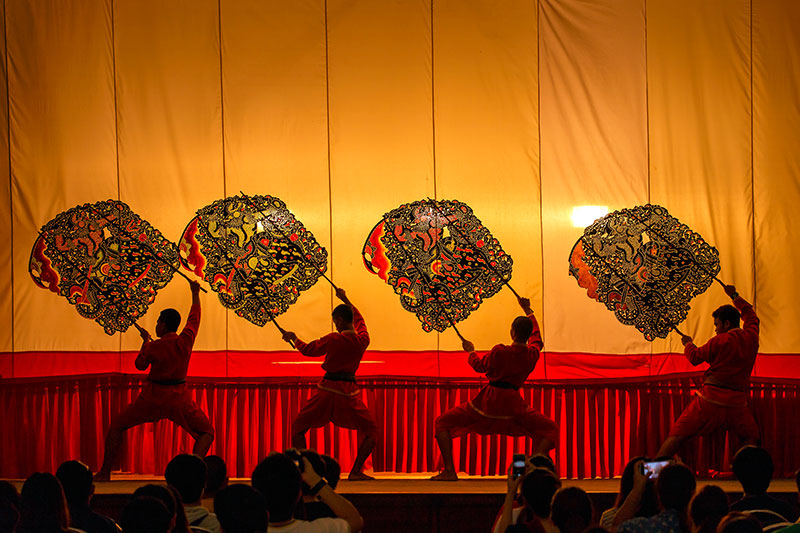
Shadow Puppetry is an ancient theatre performance art known as Nang Talung in Thailand.
Originating in different parts of Southeast Asia, this ancient art form creates an illusion of moving images by using opaque and static figures before an illuminated screen.
The ancient myth of Hanuman, the legend of the monkey god, is widely considered the first-ever story performed using this art form. The puppeteers articulately present mythical stories with great precision.
Like This Post? Pin it For Later!
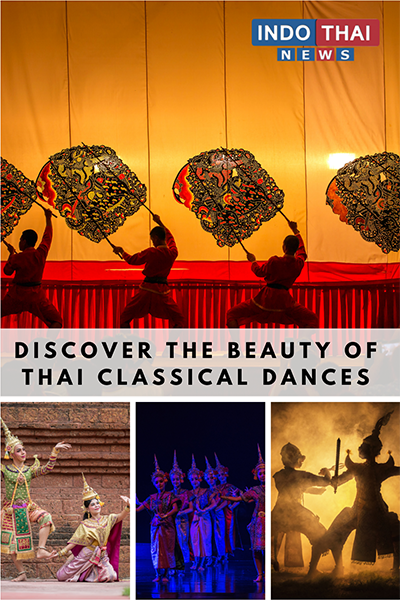
Nang Talung was popular during the ancient period but slowly faded in modern times. Wat Khanon Nang Yai, a dedicated museum, was established in Ratchaburi, Thailand, to maintain and revitalise the art form. The Wat Khanon temple spreads over 10 km in area and hosts more than 300 Nang Yai puppets.
Wat Khanon safeguards the ancient Nang Talung relics and ensures the revival of this art form by propagating it among young puppeteers. Wat Khanin is a fantastic museum wrapped in the mysteries of time.
Follow Indo Thai News for the latest update on Thailand lifestyle and culture.
Four more must read articles on Indo Thai News
Muay Thai: For Physical & Mental Wellness
From Humble Beginnings to Musical Icon: Kailash Kher’s Inspirational Story
Earth Day: A Way to Celebrate and Protect Our Planet’s Beauty and Diversity


